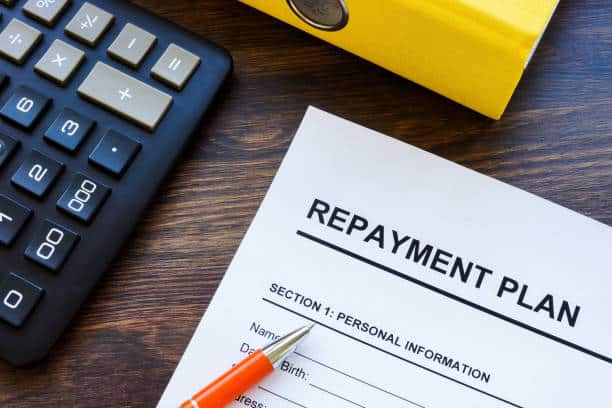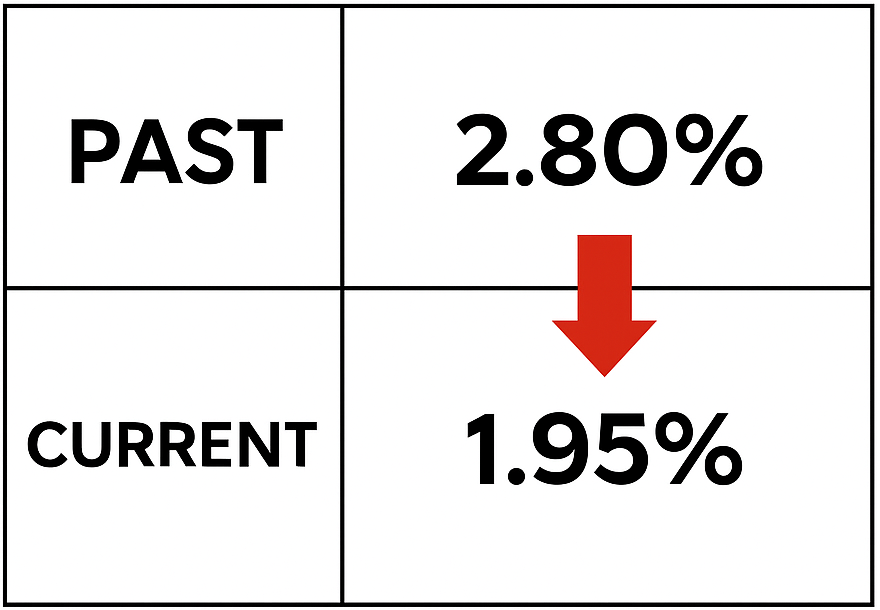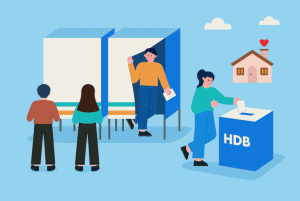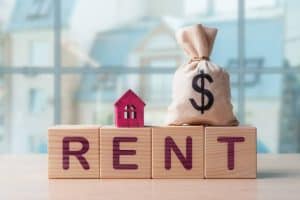Buying a home in Singapore often means using your CPF to repay your housing loan. But understanding how CPF OA works, when to adjust your payments, and how it affects your retirement savings isn’t always straightforward.
In this guide, we’ll walk you through:
- How CPF funds your home loan repayments
- Effective repayment strategies
- Tips on adjusting CPF payments
- When to consider refinancing
Whether you’re new to CPF housing loans or already repaying one, this guide will help you make informed decisions — without the confusion.
Let’s get started!
What Is CPF Housing Loan Repayment?
Your CPF Ordinary Account (OA) isn’t just for healthcare or retirement—it’s a key tool for paying your housing loan monthly. Here’s how it works:
How CPF OA funds your monthly repayment
With Singpass, you can link your loan to CPF OA and let CPF handle your monthly instalments automatically.
CPF deducts only what’s needed—up to the valuation limit set by the CPF Board—so your cash flow stays protected
Expert tip: keep a $20,000 buffer in your OA (or about 6 months of instalments) so you’re not caught short.
CPF housing loan limits and usage rules
Understanding CPF housing loan limits is essential to avoid surprises later on. Let’s break down the key usage rules and limits you need to know:
CPF Housing Loan Usage Rules and Limits
| Usage Rule | What You Can Do |
|---|---|
| Valuation Limit | Use up to this amount from OA for your loan and other costs |
| Pro-rated Limit | If your property lease covers you till age 95, you get full allowance; otherwise it’s scaled |
- Leverages your CPF without exceeding retirement limits.
- New rules: leases under 20 years = no CPF usage; 20+ years = pro-rated.
How repayment impacts your CPF retirement savings
- Every dollar used from OA reduces what can go into your Retirement Account (RA) at age 55.
- You’ll also need to refund the amount used + 2.5% interest if you sell or refinance — so think twice before dipping too deep
- Personal opinion: I usually advise clients to use CPF cautiously—CPF funds grow faster than most of us can earn elsewhere, so it’s often wiser to pay some monthly instalments in cash.
In summary, CPF housing loan repayment helps you manage your monthly cash flow, but it’s important to watch for usage limits and understand how it affects your CPF savings.
Maintain a buffer in your CPF Ordinary Account, keep an eye on the valuation or pro-rated limits, and remember to refund what you’ve used with interest if you sell your property.
For more details on how to manage your housing loan repayment, including the best home loan rates in Singapore, visit our site for personalised mortgage advice and comparisons.
Effective Repayment Strategies
Managing your CPF housing loan repayment can feel like a puzzle. Let’s explore three popular strategies and see how each one can work for you.
CPF-only repayment: maximize convenience
How it works: Let your CPF Ordinary Account (OA) handle the monthly payments automatically.
- Pros:
- Hassle-free, no manual transfers needed.
- Keeps your cash flow flexible for other expenses.
- Hassle-free, no manual transfers needed.
- Cons:
- Less CPF savings growth over time.
- You’ll need to refund the amount plus 2.5% interest if you sell or transfer the property.
- Less CPF savings growth over time.
Expert Tip: CPF usage for housing is convenient, but remember: CPF interest rates often beat bank savings accounts. Consider keeping some CPF savings untouched if possible.
For more insights, check out our guide on mortgage loan in Singapore for tips on managing your home loan with CPF.
Cash-only repayment: preserve CPF interest
How it works: Pay your housing loan instalments fully in cash, leaving your CPF OA untouched.
- Pros:
- CPF funds continue to earn 2.5% interest annually.
- Builds up your CPF savings for retirement or emergencies.
- CPF funds continue to earn 2.5% interest annually.
- Cons:
- Requires strong cash flow discipline.
- Might be harder to manage during tough financial times.
- Requires strong cash flow discipline.
SEO Tip: Cash-only payments can help you maintain higher home loan interest rates Singapore returns in your CPF — especially relevant if you’re planning for retirement.
Hybrid CPF + cash approach: balance benefits
How it works: Split repayments between CPF OA and cash. For example, pay 50% from CPF OA and 50% from cash.
- Pros:
- Flexibility to adjust based on your financial situation.
- Keeps some CPF funds earning interest while easing monthly cash burden.
- Flexibility to adjust based on your financial situation.
- Cons:
- Requires more active management to balance CPF usage and cash flow.
CPF vs. Cash Repayment Strategies – Pros and Cons
| Strategy | Benefits | Considerations |
|---|---|---|
| CPF-only | Easy and automated payments | Lower CPF interest growth; refund on sale |
| Cash-only | Builds CPF savings; higher interest earnings | Requires steady cash flow |
| Hybrid | Balances CPF savings and cash liquidity | Needs regular monitoring |
Want to compare the best home loan rates Singapore has to offer? Visit Ace Mortgage for updated rates and personalised advice.
How to Adjust CPF Payment Settings
Knowing when and how to adjust your CPF deductions can help you manage your home loan repayments smoothly and avoid surprises down the road.
When you should tweak CPF deduction rates
- Low OA balance: When your CPF Ordinary Account (OA) balance is low, you might want to adjust payments to avoid depleting your savings completely.
- Changing cash flow: If you’re experiencing changes in your monthly income, adjusting CPF payments can help keep your finances balanced.
- Interest rate fluctuations: Rising mortgage interest rates in Singapore may prompt a review of your CPF repayment strategy to maintain financial health.
Expert Tip: Regularly review your CPF usage to ensure you’re not overcommitting CPF funds that could otherwise earn interest for retirement.
Step-by-step online setting adjustments
Adjusting your CPF deductions is easier than you might think. Here’s a quick guide:
- Log in to your CPF account using Singpass.
- Go to “My Request” and select “Adjust CPF Deduction.”
- Enter the new deduction amount or percentage you want to adjust.
- Review and confirm your changes.
Note: CPF processes these changes within a few working days, so plan ahead if your next loan repayment is coming up soon.
For a full breakdown of the best housing loan rate Singapore has to offer, visit our website for updated comparisons and mortgage advice.
Smart follow-up after you adjust CPF settings
- Monitor your statements: Check monthly CPF statements to ensure your new deduction is reflected correctly.
- Maintain a buffer: Keep at least a few months’ worth of mortgage payments in your OA to avoid disruption.
- Stay updated: Track any changes in CPF housing policies that might affect your repayment strategy.
Stay informed about the latest CPF housing loan repayment rules and adjustments—especially if you’re considering different mortgage loan in Singapore options.
Early & Partial Repayment Using CPF
Sometimes, you might want to pay off your housing loan earlier or partially to save on interest and reduce your financial commitments. Here’s what you need to know about making early or partial repayments using your CPF OA funds.
Using CPF OA to pay off early or partially
- Early repayment: Pay off your entire outstanding loan balance using CPF OA funds.
- Partial repayment: Pay a lump sum from your CPF OA to reduce your loan principal, which can lower monthly instalments or shorten the loan tenure.
- Important: CPF usage is subject to housing usage limits, so always check your eligibility before making payments.
Tip: Partial repayments are a great way to reduce the overall interest paid on your mortgage. For a quick estimate of how much interest you might save, try using a mortgage loan repayment calculator.
Track your lease balance and usage limits
- Lease balance: The CPF Board requires that your property’s remaining lease covers you until you’re at least 95 years old to use CPF funds fully.
- Valuation limit: CPF OA usage is capped at 100% of the property’s valuation limit.
- Pro-rated limit: If your property lease doesn’t cover you until age 95, the usage limit is reduced proportionally.
Key CPF Housing Loan Usage Limits
| Rule | What It Means |
|---|---|
| Valuation Limit | Maximum CPF usage capped at the lower of purchase price or valuation. |
| Pro-rated Limit | Builds CPF savings; higher interest earningsCPF usage reduced if lease doesn’t cover up to age 95. |
| Remaining Lease | CPF usage limited if lease is under 20 years. |
CPF refund obligation: interest + principal payback
- When selling or refinancing: You must refund the CPF funds used for housing (principal) plus the accrued interest (2.5% per annum).
- Why it matters: If you sell at a price below the amount needed to refund CPF, you won’t be penalized, but you’ll have less CPF funds left for your retirement.
- Tip: Always plan your CPF housing usage carefully to avoid surprises at sale or refinancing time.
For more insights on managing your CPF housing loan repayment — including early repayment strategies — keep learning and exploring different ways to make the most of your CPF funds and your home loan.
Repricing vs. Refinancing: Should You Switch?
Knowing when to reprice or refinance your home loan can save you a significant amount over time. Here’s what you need to know to make the best decision for your situation.
Interest rate trends: SORA, fixed & floating
- SORA rates: Singapore Overnight Rate Average (SORA) is currently the benchmark for most floating rate packages.
- Fixed rates: Offer stability, ideal if interest rates are rising.
- Floating rates: Can fluctuate with market changes but might be lower than fixed rates during certain periods.
Expert Tip: Always compare rates from different banks to find the best mortgage loan Singapore package that suits your needs.
Use calculators to model repayment scenarios
Before deciding to reprice or refinance, it’s smart to crunch the numbers:
- Use online mortgage calculators to estimate your new monthly repayment amount.
- Compare interest savings over the loan tenure.
- Assess your cash flow and CPF OA balance to ensure affordability.
Exploring the best home loan rates Singapore has to offer can help you plan your monthly payments and reduce long-term costs.
Fee breakdown: repricing vs refinancing decisions
- Repricing fees: Usually lower, around $500–$1,000, and easier since you stay with the same bank.
- Refinancing fees: Often higher, including legal fees and valuation fees.
- Lock-in period: Check your current loan terms to avoid penalties when switching.
Key Differences Between Repricing and Refinancing
| Feature | Repricing | Refinancing |
|---|---|---|
| Fees | Lower, $500–$1,000 | Higher, including legal fees |
| Bank | Same bank | Switch to another bank |
| Lock-in | Usually easier to manage | Might have penalties |
Refinancing can be attractive if you can secure the best mortgage loan in Singapore — just be sure to weigh the costs carefully before making the switch.
Smart Repayment Enhancements
Want to get ahead on your housing loan repayment and save on interest? Here are some smart strategies to consider.
Bi-weekly and accelerated repayment hacks
- Bi-weekly payments: Instead of paying monthly, split your monthly repayment in half and pay every two weeks. This results in one extra payment per year, which helps reduce your principal faster.
- Accelerated payments: Increase your monthly repayments whenever your budget allows, even by small amounts. Over time, these extra payments can shave years off your loan tenure.
Even small increases in payments can lead to substantial interest savings — it’s a smart move if your cash flow allows.
Interest-only periods & repayment holidays
- Interest-only periods: Some lenders offer interest-only payment periods (usually during construction or renovation). This can ease cash flow temporarily but means you’ll pay more interest in the long run.
- Repayment holidays: Short-term breaks from loan payments can help during financial hardship, but interest continues to accrue during this time.
Use these features carefully — they’re best as temporary solutions rather than long-term strategies.
Boost repayments with passive income ideas
- Side gigs or freelance work: Allocate extra earnings to your home loan repayments.
- Dividend income: Direct dividends from stocks or REITs to reduce your loan balance.
- Rental income: Rent out a spare room and funnel the income towards your mortgage.
Ways to Boost Your CPF Housing Loan Repayment
| Income Source | How to Use It for Repayment |
|---|---|
| Side Gigs | Use extra earnings to pay down your principal |
| Dividends | Direct them to offset your monthly payments |
| Rental Income | Allocate it to reduce your loan tenure faster |
If you’re considering upgrading to a private property in the future, learn more about flexible financing with our private property loan resources.
Common Questions & Next Steps
Managing your CPF housing loan repayment can feel overwhelming at times. Let’s tackle some of the most common questions homeowners in Singapore ask, and share practical next steps.
What to do if you miss a loan payment
- Stay calm: Missing a single payment isn’t the end of the world, but act quickly to avoid penalties.
- Contact your lender: Explain your situation and request a short extension or discuss repayment options.
- Check your CPF OA balance: Ensure there’s enough to cover future payments, or adjust your CPF deductions if needed.
It is VERY important to have consistent communication with your lender as it helps prevent late payment fees or legal action.
How extra payments save you interest over time
- Reducing principal: Every extra payment directly reduces your outstanding principal, lowering the amount of interest charged.
- Shortening tenure: Regular top-ups can also shorten your loan tenure, helping you become debt-free faster.
Example: Paying an extra S$500 a month on a S$400,000 loan can reduce your tenure by several years and save thousands in interest.
Benefits of Making Extra Payments on Your CPF Housing LoanBenefit
| Benefit | How It Helps You |
|---|---|
| Lower Interest | Pay less total interest over time |
| Faster Repayment | Shorten your loan tenure |
| Financial Flexibility | Free up cash flow for other goals |
When to get help from a mortgage advisor
- Loan repricing or refinancing: If you’re thinking about switching loan packages to get better rates.
- Financial hardship: A professional can help you explore loan restructuring or other relief measures.
- Planning upgrades: Considering a new home purchase or refinancing to a private property loan? An advisor can walk you through eligibility, paperwork, and strategy.
If you’re exploring different loan packages, including DBS home loan options, check out our DBS home loan guide for expert advice and up-to-date rates.
Mastering CPF Housing Loan Repayment in Singapore
Navigating CPF housing loan repayment in Singapore doesn’t have to be overwhelming. By understanding how CPF OA works, tracking your usage limits, exploring different repayment strategies, and making smart financial decisions, you can confidently manage your home loan while planning for your future.
If you’re ready to take the next step and compare rates, refinancing options, or explore the best mortgage packages, check out our Singapore mortgage broker guide for tailored advice and up-to-date insights.
Stay proactive, ask questions, and make informed choices—your home ownership journey is an important one, and you deserve to feel confident every step of the way.














